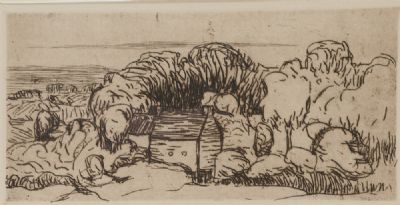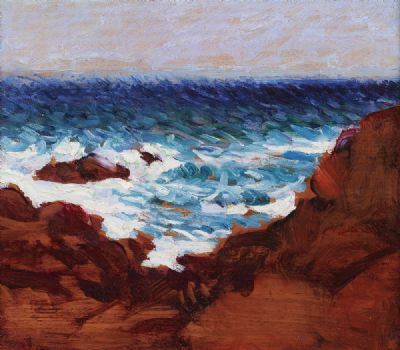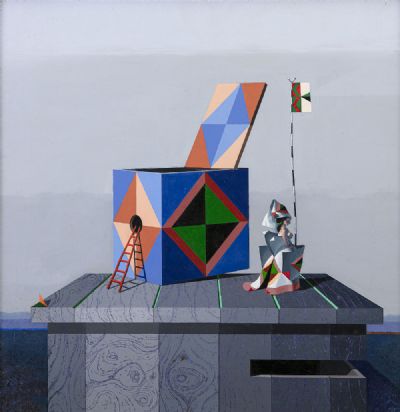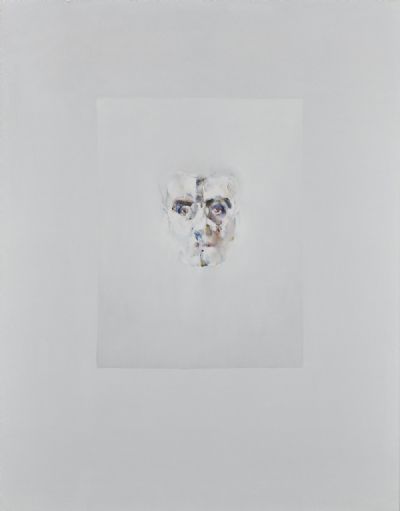Bidding on this item has ended.
Roderic O'Conor
THE BREAKING WAVE
Lot 17
Price Realised:
€230,000
Estimate:
€200,000 - €300,000
Roderic O'Conor, 1860-1940
THE BREAKING WAVE (1898/1899)
Oil on canvas, 28" x 36" (72.5 x 92cm); atelier O'Conor stamp verso, also with stamp of the canvas suppliers 'Blanchet, Rue Saint Benoit, Paris'.
Provenance: Sale, Hotel Drouot, ...
Read more
 Lot 17
Roderic O'Conor
THE BREAKING WAVE
Lot 17
Roderic O'Conor
THE BREAKING WAVE
 Lot 17
Roderic O'Conor
THE BREAKING WAVE
Lot 17
Roderic O'Conor
THE BREAKING WAVE
Estimate:
€200,000 - €300,000
Roderic O'Conor, 1860-1940
THE BREAKING WAVE (1898/1899)
Oil on canvas, 28" x 36" (72.5 x 92cm); atelier O'Conor stamp verso, also with stamp of the canvas suppliers 'Blanchet, Rue Saint Benoit, Paris'.
Provenance: Sale, Hotel Drouot, Paris, Vente O'Conor, 7 February 1956; Purchased by the vendors grandmother, who lived in Paris after the second World War; gifted to his parents on their wedding in 1974; since gifted to him, the present owner.
The Breaking Wave has been in a private collection for over four decades and not seen in public since 1956. Its scale, subject matter and daring conception enhance our understanding of Roderic O'Conor's exhaustive commitment to the seascape idiom. Indeed for five years, 1896 to 1901, he barely touched a landscape.
In his paintings of the Breton coast O'Conor worked in two idioms that reflected his alignment with the most significant modern artists: on the one hand an exotic, Gauguin-inspired palette with the colours washed on quite thinly; and on the other a more impasted application of pigment such as that seen in The Breaking Wave. The latter approach took its cue from Van Gogh, notably works such as By the Seine of 1887 (included in Ambroise Vollard's second Van Gogh exhibition, December 1896 - February 1897) in which the Dutch artist combined a densely painted foreground with a much more lightly executed sky. In The Breaking Wave the scumbled pinks and purples of the clouds contrast with the much broader handling of the sea, endowing the latter with an expressive force appropriate to its relentless energy. This switching of techniques to suit the motifs in front of him shows not only what a versatile artist O'Conor was, but also his precocious anticipation of later movements such as German Expressionism.
The size of the present work, the horizontally zoned composition and the preference for cooler tints are all reminiscent of O'Conor's well-known seascape, La vague (York Art Gallery), that he would exhibit at the 1903 Salon des Independants in Paris. Where these two large works differ, however, is in the sky, which has grown to dominating proportions in The Breaking Wave, and with it comes a greater focus on the play of light. Piercing the windswept clouds, which partly veil the sun, pools of diffuse light catch the crests of the waves in the foreground and middle ground, besides 'lifting' the three exposed, seaweed-covered reefs in the background. In order perhaps to give the sea greater depth and luminosity, the artist innovated by laying down a ground of bright blue paint, before covering this with a top coat of green relieved with touches of pink, echoing the salmon tints in the sky.
The Breaking Wave is more elemental and abstract than most of the Irishman's Breton seascapes. We are confronted with a scene where the spume and foam of a broiling sea seem about to engulf us, for the artist has positioned himself at sea level, unlike the safer cliff-tops frequented by Monet. In order to match this sense of immediacy one has to look to the work of later seascape-painters such as Joan Eardley (1921-63), but a comparator from the generation before O'Conor who made his name as a pioneer of photography bears uncanny similarities. Gustave le Gray (1820-84), a trained artist who opened a photographic studio in the Boulevard des Capucines in 1855, became obsessed with the sea as subject when visiting the Norman, Breton and Mediterranean coasts during 1856-57. On many occasions, such as in The Great wave, Sète of 1857, he pointed his large plate camera directly at the sun in order to shorten the exposure time and freeze-frame the movement of the waves. In so doing he captured the drama of the sky as much as that of the breaking waves - a combination echoed in this work of O'Conor's. Although it has not yet proved possible to definitively connect the creative output of the two men, the fact that they both favoured minimalist compositions with an emphasis on movement above and below the horizon, may well signal an influence.
It is possible that O'Conor knew his Breton seascapes were ahead of their time, hence his decision not to exhibit any of them until 1903. Armand Seguin tried to persuade his friend otherwise, writing to him in March of that year: "one of your seascapes, you know from the series I admire, will not do your work justice, but the collecting together of these pictures would demonstrate your research, your burst of energy, declaring your intentions and the new beauty of your art." The prescience of Seguin's advice, to which O'Conor responded by exhibiting four seascapes at the Independants, is borne out when one confronts the work the Fauves would produce after the turn of the century. Andre Derain's 1906 painting, Sunlight effects on water, London, is but one example of how he and Matisse intensified the kind of radicalism that O'Conor brought to bear in his Breton seascapes eight years earlier. He truly was, as Henry Roland put it, a fauve before the Fauves.
THE BREAKING WAVE (1898/1899)
Oil on canvas, 28" x 36" (72.5 x 92cm); atelier O'Conor stamp verso, also with stamp of the canvas suppliers 'Blanchet, Rue Saint Benoit, Paris'.
Provenance: Sale, Hotel Drouot, Paris, Vente O'Conor, 7 February 1956; Purchased by the vendors grandmother, who lived in Paris after the second World War; gifted to his parents on their wedding in 1974; since gifted to him, the present owner.
The Breaking Wave has been in a private collection for over four decades and not seen in public since 1956. Its scale, subject matter and daring conception enhance our understanding of Roderic O'Conor's exhaustive commitment to the seascape idiom. Indeed for five years, 1896 to 1901, he barely touched a landscape.
In his paintings of the Breton coast O'Conor worked in two idioms that reflected his alignment with the most significant modern artists: on the one hand an exotic, Gauguin-inspired palette with the colours washed on quite thinly; and on the other a more impasted application of pigment such as that seen in The Breaking Wave. The latter approach took its cue from Van Gogh, notably works such as By the Seine of 1887 (included in Ambroise Vollard's second Van Gogh exhibition, December 1896 - February 1897) in which the Dutch artist combined a densely painted foreground with a much more lightly executed sky. In The Breaking Wave the scumbled pinks and purples of the clouds contrast with the much broader handling of the sea, endowing the latter with an expressive force appropriate to its relentless energy. This switching of techniques to suit the motifs in front of him shows not only what a versatile artist O'Conor was, but also his precocious anticipation of later movements such as German Expressionism.
The size of the present work, the horizontally zoned composition and the preference for cooler tints are all reminiscent of O'Conor's well-known seascape, La vague (York Art Gallery), that he would exhibit at the 1903 Salon des Independants in Paris. Where these two large works differ, however, is in the sky, which has grown to dominating proportions in The Breaking Wave, and with it comes a greater focus on the play of light. Piercing the windswept clouds, which partly veil the sun, pools of diffuse light catch the crests of the waves in the foreground and middle ground, besides 'lifting' the three exposed, seaweed-covered reefs in the background. In order perhaps to give the sea greater depth and luminosity, the artist innovated by laying down a ground of bright blue paint, before covering this with a top coat of green relieved with touches of pink, echoing the salmon tints in the sky.
The Breaking Wave is more elemental and abstract than most of the Irishman's Breton seascapes. We are confronted with a scene where the spume and foam of a broiling sea seem about to engulf us, for the artist has positioned himself at sea level, unlike the safer cliff-tops frequented by Monet. In order to match this sense of immediacy one has to look to the work of later seascape-painters such as Joan Eardley (1921-63), but a comparator from the generation before O'Conor who made his name as a pioneer of photography bears uncanny similarities. Gustave le Gray (1820-84), a trained artist who opened a photographic studio in the Boulevard des Capucines in 1855, became obsessed with the sea as subject when visiting the Norman, Breton and Mediterranean coasts during 1856-57. On many occasions, such as in The Great wave, Sète of 1857, he pointed his large plate camera directly at the sun in order to shorten the exposure time and freeze-frame the movement of the waves. In so doing he captured the drama of the sky as much as that of the breaking waves - a combination echoed in this work of O'Conor's. Although it has not yet proved possible to definitively connect the creative output of the two men, the fact that they both favoured minimalist compositions with an emphasis on movement above and below the horizon, may well signal an influence.
It is possible that O'Conor knew his Breton seascapes were ahead of their time, hence his decision not to exhibit any of them until 1903. Armand Seguin tried to persuade his friend otherwise, writing to him in March of that year: "one of your seascapes, you know from the series I admire, will not do your work justice, but the collecting together of these pictures would demonstrate your research, your burst of energy, declaring your intentions and the new beauty of your art." The prescience of Seguin's advice, to which O'Conor responded by exhibiting four seascapes at the Independants, is borne out when one confronts the work the Fauves would produce after the turn of the century. Andre Derain's 1906 painting, Sunlight effects on water, London, is but one example of how he and Matisse intensified the kind of radicalism that O'Conor brought to bear in his Breton seascapes eight years earlier. He truly was, as Henry Roland put it, a fauve before the Fauves.
- Enquire
- View all lots by this artist
- How bidding works
Please note: You will require a deVeres account in order to bid. Please register via the website. Each lot will close numerically. If there is late bidding the time may be extended which could delay subsequent lots. The lots will start to close from 2.00pm on auction day, closing at 45 second intervals.
PLEASE BID EARLY TO AVOID DISAPPOINTMENT.
In order to allow rival bidders the opportunity to respond to a late bid the following extensions will apply:
IF A BID IS RECEIVED WITHIN THE FINAL 45 SECONDS OF THE COUNTDOWN THE CLOCK WILL RESET TO 60 SECONDS.
At any point you can leave a maximum bid, representing the highest price you are prepared to pay for a particular lot. Bidding only advances when there is competition from a rival bidder. In that case the system bids on your behalf, only up to the maximum if required. All bids are relayed to you be email, along with notification if you have been outbid.
All maximum bids are confidential and not disclosed. The system will endeavor to purchase the lot for you for the least price. Bids are subject to buyer’s premium of 25% (incl vat), with no additional charges.
In the event of a tied bid, the preference will be given to the bid submitted first. The second bidder will receive immediate notification of being outbid.
PLEASE BID EARLY TO AVOID DISAPPOINTMENT.
In order to allow rival bidders the opportunity to respond to a late bid the following extensions will apply:
IF A BID IS RECEIVED WITHIN THE FINAL 45 SECONDS OF THE COUNTDOWN THE CLOCK WILL RESET TO 60 SECONDS.
At any point you can leave a maximum bid, representing the highest price you are prepared to pay for a particular lot. Bidding only advances when there is competition from a rival bidder. In that case the system bids on your behalf, only up to the maximum if required. All bids are relayed to you be email, along with notification if you have been outbid.
All maximum bids are confidential and not disclosed. The system will endeavor to purchase the lot for you for the least price. Bids are subject to buyer’s premium of 25% (incl vat), with no additional charges.
In the event of a tied bid, the preference will be given to the bid submitted first. The second bidder will receive immediate notification of being outbid.
Sign-up to our auction alert
Signup for personalised Irish art recommendations, invitations to viewings and auctions, articles and more.

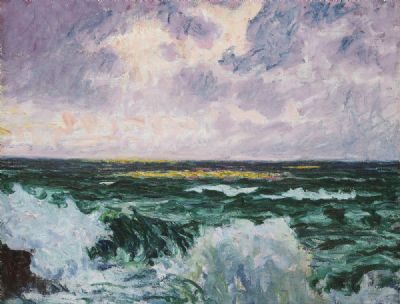
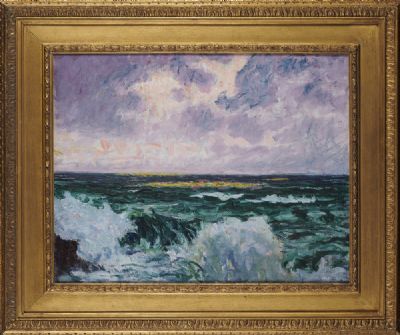
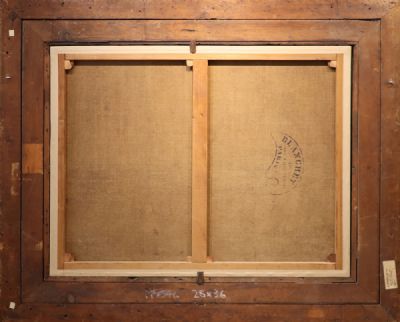
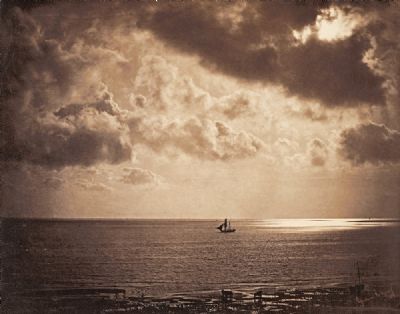
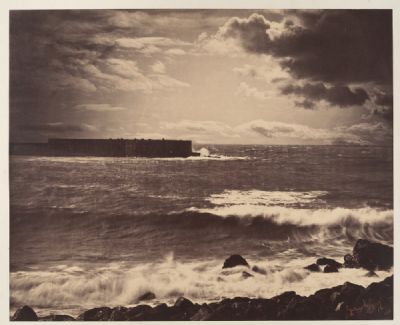
 View More Videos
View More Videos DVTV Click Here To View Video
DVTV Click Here To View Video